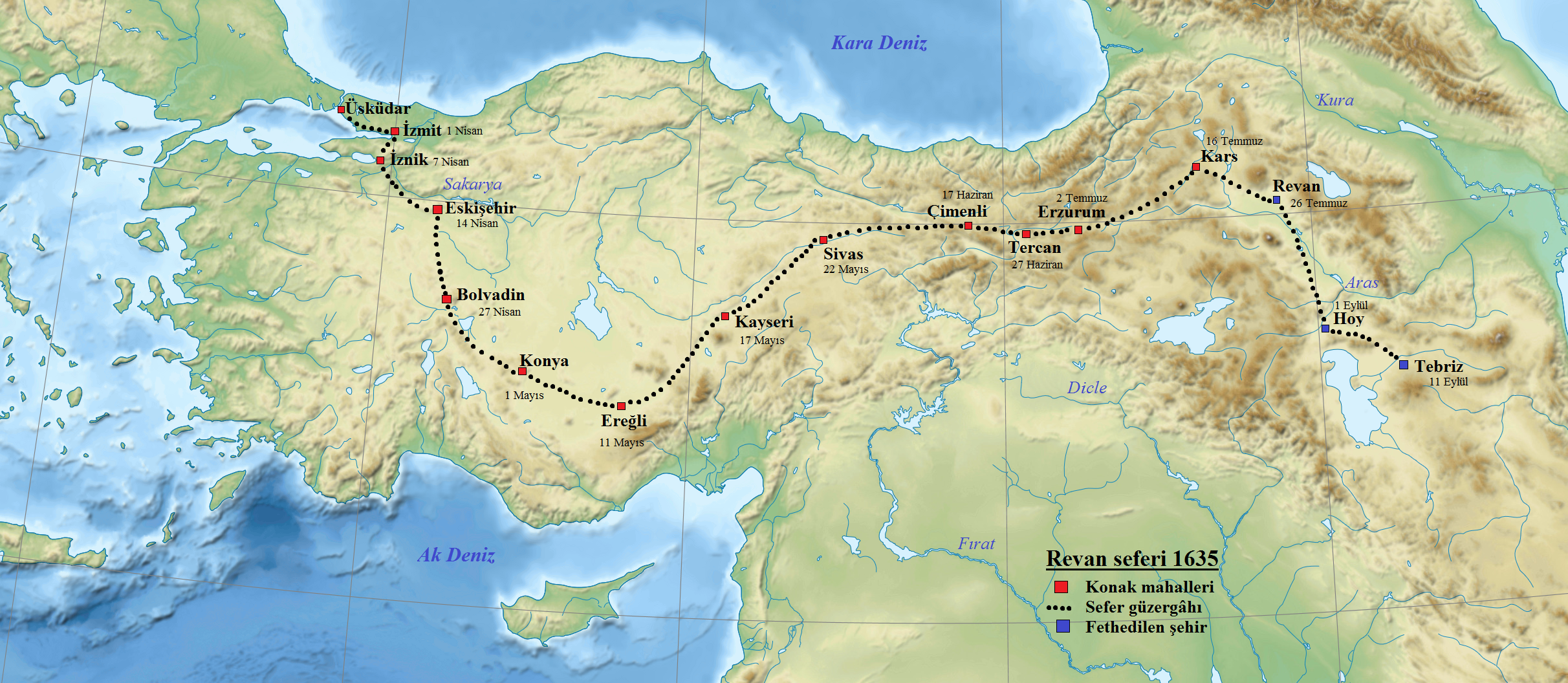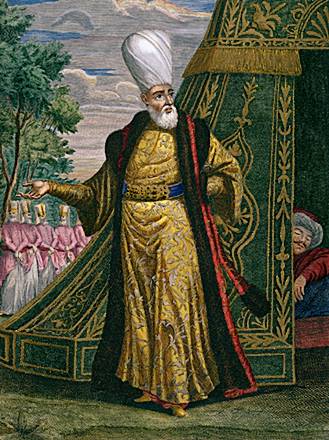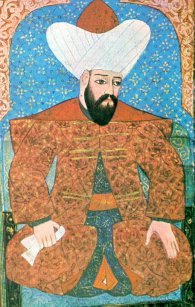|
Kemankeş Kara Ali Pasha
Kemankeş Kara Ali Paşa was a Turkish Ottoman statesman. He was the 80th grand vizier of the Ottoman Empire from 1623 to 1624.Turkish State Archives during the reign of Sultan Murad IV. He played an crucial role in the Ottoman–Safavid War (1623–1639). He was highly influential especially with the Janesaries. See also * List of Ottoman grand viziers The grand vizier of the Ottoman Empire ( or ''Sadr-ı Azam'' (''Sadrazam''); Ottoman Turkish language, Ottoman Turkish: or ) was the ''de facto'' prime minister of the Sultan of the Ottoman Empire, sultan in the Ottoman Empire, with the absolute p ... References 17th-century grand viziers of the Ottoman Empire Turks from the Ottoman Empire People executed by ligature strangulation 17th-century executions by the Ottoman Empire Executed people from the Ottoman Empire Year of birth unknown {{Ottoman-bio-stub ... [...More Info...] [...Related Items...] OR: [Wikipedia] [Google] [Baidu] |
Turkic Peoples
Turkic peoples are a collection of diverse ethnic groups of West Asia, West, Central Asia, Central, East Asia, East, and North Asia as well as parts of Europe, who speak Turkic languages.. "Turkic peoples, any of various peoples whose members speak languages belonging to the Turkic subfamily...". "The Turkic peoples represent a diverse collection of ethnic groups defined by the Turkic languages." According to historians and linguists, the Proto-Turkic language originated in Central-East Asia, potentially in the Altai-Sayan region, Mongolia or Tuva.: "The ultimate Proto-Turkic homeland may have been located in a more compact area, most likely in Eastern Mongolia": "The best candidate for the Turkic Urheimat would then be northern and western Mongolia and Tuva, where all these haplogroups could have intermingled, rather than eastern and southern Mongolia..." Initially, Proto-Turkic speakers were potentially both hunter-gatherers and farmers; they later became nomadic Pastoralism, ... [...More Info...] [...Related Items...] OR: [Wikipedia] [Google] [Baidu] |
Ottoman Empire
The Ottoman Empire (), also called the Turkish Empire, was an empire, imperial realm that controlled much of Southeast Europe, West Asia, and North Africa from the 14th to early 20th centuries; it also controlled parts of southeastern Central Europe, between the early 16th and early 18th centuries. The empire emerged from a Anatolian beyliks, ''beylik'', or principality, founded in northwestern Anatolia in by the Turkoman (ethnonym), Turkoman tribal leader Osman I. His successors Ottoman wars in Europe, conquered much of Anatolia and expanded into the Balkans by the mid-14th century, transforming their petty kingdom into a transcontinental empire. The Ottomans ended the Byzantine Empire with the Fall of Constantinople, conquest of Constantinople in 1453 by Mehmed II. With its capital at History of Istanbul#Ottoman Empire, Constantinople (modern-day Istanbul) and control over a significant portion of the Mediterranean Basin, the Ottoman Empire was at the centre of interacti ... [...More Info...] [...Related Items...] OR: [Wikipedia] [Google] [Baidu] |
Grand Vizier Of The Ottoman Empire
The grand vizier of the Ottoman Empire ( or ''Sadr-ı Azam'' (''Sadrazam''); Ottoman Turkish language, Ottoman Turkish: or ) was the ''de facto'' prime minister of the Sultan of the Ottoman Empire, sultan in the Ottoman Empire, with the absolute power of attorney and, in principle, removable only by the Sultan of the Ottoman Empire, sultan himself in the classical period, before the Tanzimat Fermanı, Tanzimat reforms, or until the Second Constitutional Era, 1908 Revolution. He held the imperial seal and could summon all other viziers to attend to affairs of the state in the Imperial Council (Ottoman Empire), Imperial Council; the viziers in conference were called "''kubbe'' viziers" in reference to their meeting place, the ''Kubbealtı'' ('under-the-dome') in Topkapı Palace. His offices were located at the Sublime Porte. History During the emerging phases of the Ottoman state, "vizier" was the only title used. The first of these Ottoman viziers who was titled "grand vizier" was ... [...More Info...] [...Related Items...] OR: [Wikipedia] [Google] [Baidu] |
Sultan Murad IV
Murad IV (, ''Murād-ı Rābiʿ''; , was the sultan of the Ottoman Empire from 1623 to 1640, known both for restoring the authority of the state and for the brutality of his methods. Murad IV was born in Constantinople, the son of Sultan Ahmed I (r. 1603–17) and Kösem Sultan. He was brought to power by a palace conspiracy when he was just 11 years old, and he succeeded his uncle Mustafa I (r. 1617–18, 1622–23). Until he assumed absolute power on 18 May 1632, the empire was ruled by his mother, Kösem Sultan, as ''nāʾib-i salṭanat'' (regent). His reign is most notable for the Ottoman–Safavid War, of which the outcome would partition the Caucasus between the two Imperial powers for around two centuries, while it also roughly laid the foundation for the current Turkey–Iran–Iraq borders. Early life Murad IV was born on 27 July 1612 to Ahmed I (reign 16031617) and his consort and later wife Kösem Sultan, an ethnic Greek ... [...More Info...] [...Related Items...] OR: [Wikipedia] [Google] [Baidu] |
Ottoman–Safavid War (1623–1639)
The Ottoman–Safavid War of 1623–1639 was a conflict fought between the Ottoman Empire and Safavid Iran, then the two major powers of Western Asia, over control of Mesopotamia. After initial Safavid success in recapturing Baghdad and most of modern Iraq, having lost it for 90 years, the war became a stalemate as the Safavids were unable to press further into the Ottoman Empire, and the Ottomans themselves were distracted by wars in Europe and weakened by internal turmoil. Eventually, the Ottomans were able to recover Baghdad, taking heavy losses in Capture of Baghdad (1638), the final siege, and the signing of the Treaty of Zuhab ended the war in an Ottoman victory. Roughly speaking, the treaty restored the borders of Peace of Amasya, 1555, with the Safavids keeping Safavid Daghestan, Daghestan, Safavid Shirvan, Shirvan, eastern History of Georgia (country), Georgia, and Eastern Armenia, while western Georgia and Western Armenia decisively came under Ottoman rule. The eastern ... [...More Info...] [...Related Items...] OR: [Wikipedia] [Google] [Baidu] |
Janissary
A janissary (, , ) was a member of the elite infantry units that formed the Ottoman sultan's household troops. They were the first modern standing army, and perhaps the first infantry force in the world to be equipped with firearms, adopted during the reign of Murad II (r. 1421–1444, 1446–1451). The corps was established under either Orhan or Murad I, and dismantled by Mahmud II in 1826. Janissaries began as elite corps made up through the ''devşirme'' system of Ghilman, child levy enslavement, by which Ethnic groups in Europe, indigenous European Christians, Christian boys, chiefly from the Balkans, were taken, levied, subjected to forced circumcision and Forced conversion#Islam, forced conversion to Islam, and incorporated into the Ottoman army in the 15th–19th centuries, Ottoman army. They became famed for internal cohesion cemented by strict discipline and order. Unlike typical History of slavery in the Muslim world, slaves, they were paid regular salaries. Forbidden ... [...More Info...] [...Related Items...] OR: [Wikipedia] [Google] [Baidu] |
List Of Ottoman Grand Viziers
The grand vizier of the Ottoman Empire ( or ''Sadr-ı Azam'' (''Sadrazam''); Ottoman Turkish language, Ottoman Turkish: or ) was the ''de facto'' prime minister of the Sultan of the Ottoman Empire, sultan in the Ottoman Empire, with the absolute power of attorney and, in principle, removable only by the Sultan of the Ottoman Empire, sultan himself in the classical period, before the Tanzimat Fermanı, Tanzimat reforms, or until the Second Constitutional Era, 1908 Revolution. He held the imperial seal and could summon all other viziers to attend to affairs of the state in the Imperial Council (Ottoman Empire), Imperial Council; the viziers in conference were called "''kubbe'' viziers" in reference to their meeting place, the ''Kubbealtı'' ('under-the-dome') in Topkapı Palace. His offices were located at the Sublime Porte. History During the emerging phases of the Ottoman state, "vizier" was the only title used. The first of these Ottoman viziers who was titled "grand vizier" was ... [...More Info...] [...Related Items...] OR: [Wikipedia] [Google] [Baidu] |
Mere Hüseyin Pasha
Mere Hüseyin Pasha (died July 1624) was an Ottoman statesman of Albanian origin.Uzunçarsılı, İsmail Hakkı, (1954) ''Osmanlı Tarihi III. Cilt, 2. Kısım, XVİ. Yüzyıl Ortalarından XVII. Yüzyıl Sonuna kadar'', Ankara: Türk Tarih Kurumu (Altıncı Baskı 2011 ) p. 380 He was two times Grand Vizier of the Ottoman Empire in 1622 and 1623,İsmail Hâmi Danişmend, Osmanlı Devlet Erkânı, Türkiye Yayınevi, İstanbul, 1971 (Turkish) and previously the Ottoman governor of Egypt between 1620 and 1622. His epithet "Mere!" comes from the word for "Take it!" in Albanian; he was nicknamed so because of the many times he ordered his men to "take he heads of his opponents, i.e. execute them. He was purportedly the only grand vizier who did not speak Ottoman Turkish or Osmanlica. Life Hüseyin Pasha was an Albanian from the region of İpek, in present-day Kosovo. He may have been a progenitor of the Begolli family. It is purported that he never learned to speak Turkish, a ... [...More Info...] [...Related Items...] OR: [Wikipedia] [Google] [Baidu] |
Çerkes Mehmed Pasha
Çerkes Mehmed Ali Pasha (; died 28 January 1625) was an Ottoman statesman who served as Grand Vizier of the Ottoman Empire from 1624 to 1625.İsmail Hâmi Danişmend, Osmanlı Devlet Erkânı, Türkiye Yayınevi, İstanbul, 1971 (Turkish) Mehmed was of Circassian origins, hence his epithet. He was educated in the Enderun School in Istanbul. At one point, he served as the armorer and bodyguard () of the sultan. He died of illness on 28 January 1625 in Tokat. See also * List of Ottoman grand viziers The grand vizier of the Ottoman Empire ( or ''Sadr-ı Azam'' (''Sadrazam''); Ottoman Turkish language, Ottoman Turkish: or ) was the ''de facto'' prime minister of the Sultan of the Ottoman Empire, sultan in the Ottoman Empire, with the absolute p ... References 17th-century grand viziers of the Ottoman Empire People from the Ottoman Empire of Circassian descent 1625 deaths Year of birth unknown {{Ottoman-bio-stub ... [...More Info...] [...Related Items...] OR: [Wikipedia] [Google] [Baidu] |
17th-century Grand Viziers Of The Ottoman Empire
The 17th century lasted from January 1, 1601 (represented by the Roman numerals MDCI), to December 31, 1700 (MDCC). It falls into the early modern period of Europe and in that continent (whose impact on the world was increasing) was characterized by the Baroque cultural movement, the latter part of the Spanish Golden Age, the Dutch Golden Age, the French '' Grand Siècle'' dominated by Louis XIV, the Scientific Revolution, the world's first public company and megacorporation known as the Dutch East India Company, and according to some historians, the General Crisis. From the mid-17th century, European politics were increasingly dominated by the Kingdom of France of Louis XIV, where royal power was solidified domestically in the civil war of the Fronde. The semi-feudal territorial French nobility was weakened and subjugated to the power of an absolute monarchy through the reinvention of the Palace of Versailles from a hunting lodge to a gilded prison, in which a greatly expande ... [...More Info...] [...Related Items...] OR: [Wikipedia] [Google] [Baidu] |
Turks From The Ottoman Empire
Turk or Turks may refer to: Communities and ethnic groups * Turkish people, or the Turks, a Turkic ethnic group and nation * Turkish citizen, a citizen of the Republic of Turkey * Turkic peoples, a collection of ethnic groups who speak Turkic languages * Turks, reference to the Ottoman Empire * Turk (term for Muslims), used by non-Muslim Balkan peoples * Turks of South Carolina, a group of people in the US * "Turks", nickname for inhabitants of Faymonville, Liège, Belgium * "Turks", nickname for inhabitants of Llanelli, Carmarthenshire, Wales People * Turk (surname), a list of people with the name * Turk (nickname), a list of people with the nickname * Turk (rapper), stage name of American rapper Tab Virgil Jr. (born 1981) * Philippe Liégeois (born 1947), pen name "Turk", Belgian comic book artist * Al-Turk, a list of people with the name Places * Brig o' Turk, a small rural village in Scotland * Turks Islands, part of the Turks and Caicos Islands, West Indies * Turk ... [...More Info...] [...Related Items...] OR: [Wikipedia] [Google] [Baidu] |
People Executed By Ligature Strangulation
The term "the people" refers to the public or common mass of people of a polity. As such it is a concept of human rights law, international law as well as constitutional law, particularly used for claims of popular sovereignty. In contrast, a people is any plurality of persons considered as a whole. Used in politics and law, the term "a people" refers to the collective or community of an ethnic group or nation. Concepts Legal Chapter One, Article One of the Charter of the United Nations states that "peoples" have the right to self-determination. Though the mere status as peoples and the right to self-determination, as for example in the case of Indigenous peoples (''peoples'', as in all groups of indigenous people, not merely all indigenous persons as in ''indigenous people''), does not automatically provide for independent sovereignty and therefore secession. Indeed, judge Ivor Jennings identified the inherent problems in the right of "peoples" to self-determination, as i ... [...More Info...] [...Related Items...] OR: [Wikipedia] [Google] [Baidu] |






